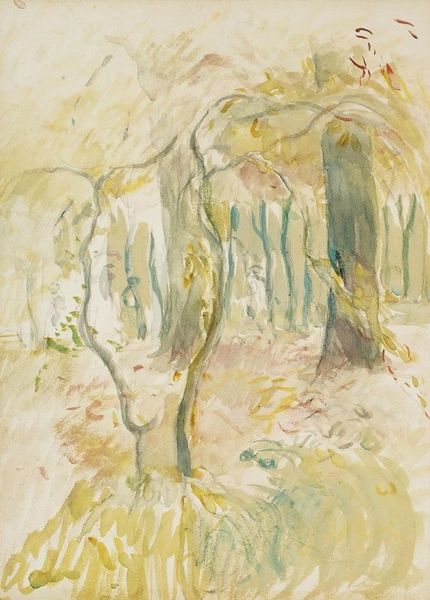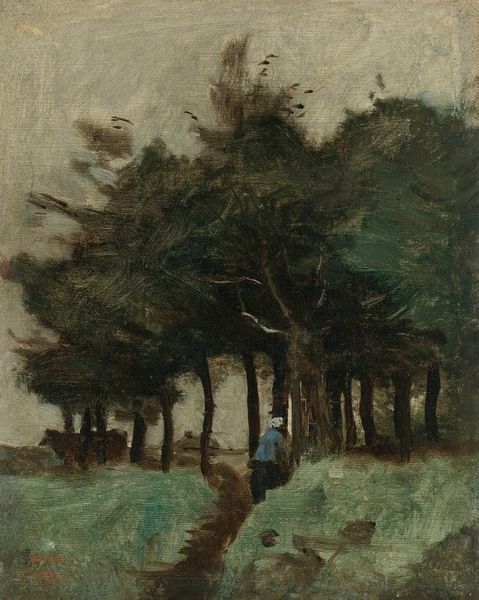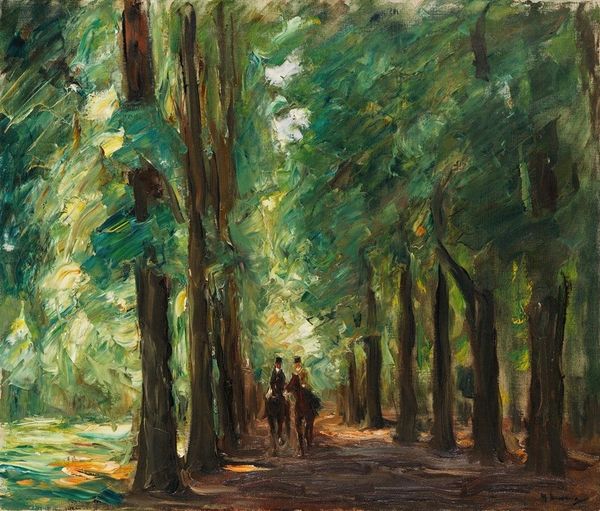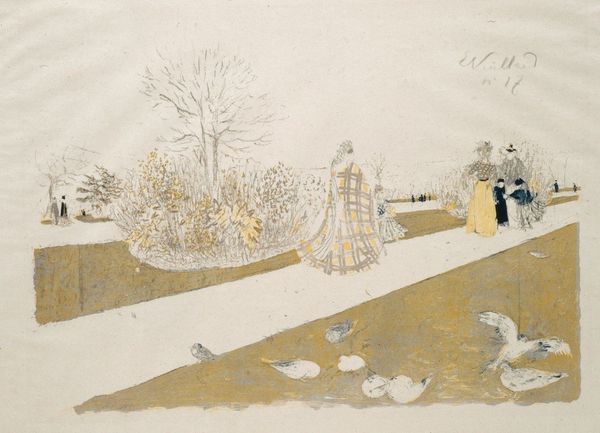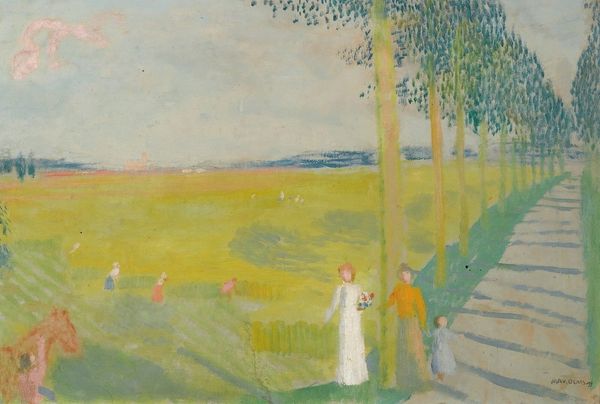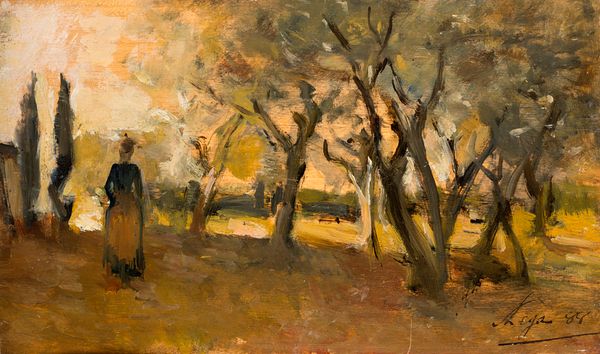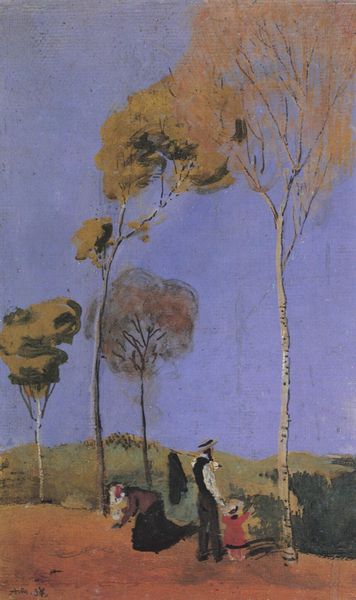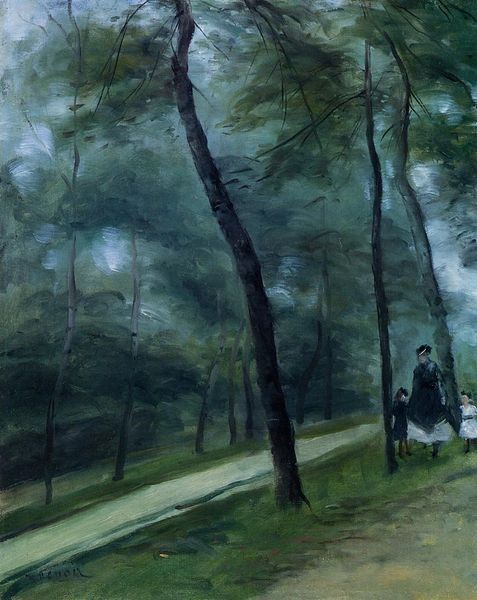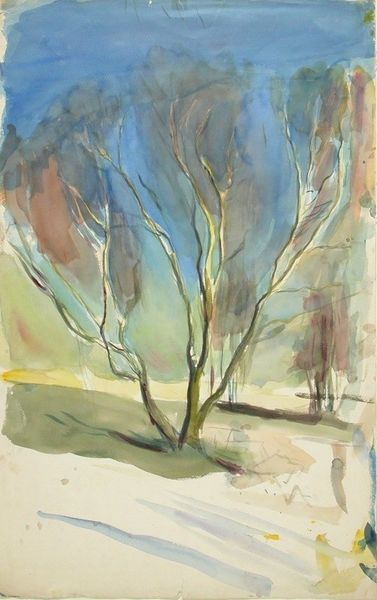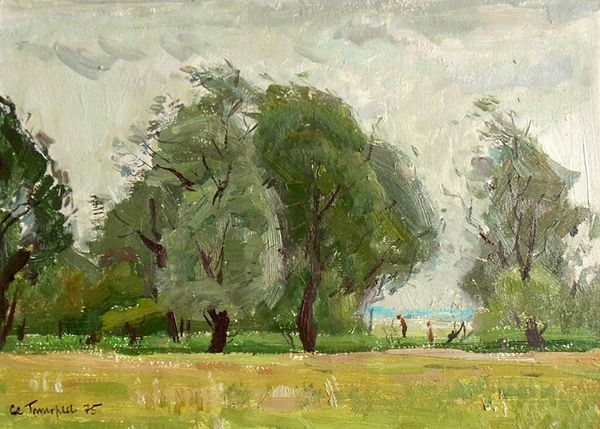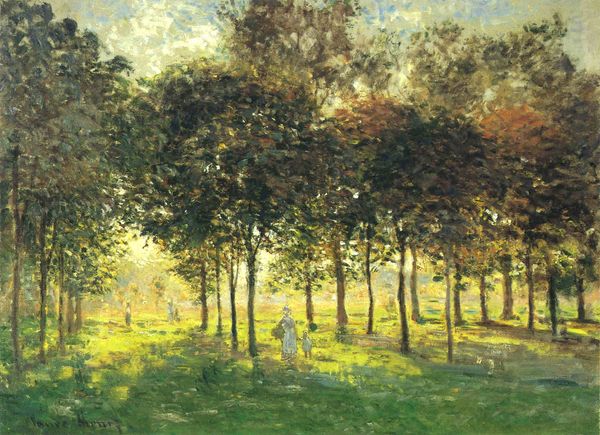
Copyright: Jean Paul Lemieux,Fair Use
Editor: Jean Paul Lemieux's 1979 oil painting, "Le Pré," presents a landscape framed by towering trees, with two figures resting in the foreground. The whole thing has this hazy, almost dreamlike quality. What strikes me most is the positioning of the figures. How do you interpret this work? Curator: I see this work through the lens of institutional representation and the broader socio-political landscape of art at the time. Lemieux, a celebrated Canadian artist, often depicted figures within stark landscapes. This particular composition makes me consider how notions of the pastoral idyll have been historically presented and consumed, particularly within gallery settings. Where do these figures come from, what does it mean for their bodies to be present? Editor: I never thought about that. I was caught up with how the romantic style plays against the potential harshness of reality in their circumstances. It does make you wonder if there are deeper social commentaries being expressed here. Curator: Exactly. Lemieux often uses a visual economy which invites us to question the narratives perpetuated within Canadian art institutions. Is he glorifying a myth, critiquing it, or perhaps even subverting our expectations through this romantic aesthetic, challenging how Canadian identity is represented? Who is this “we”, when thinking about Canadian Identity, how exclusive is it? Editor: That's fascinating. I initially saw it as just a tranquil scene. It seems almost deceptively simple. Curator: Simplicity is often a clever mask. Considering Lemieux's career and the cultural moment in which he created "Le Pré" – late 1970s Canada – might open a richer understanding of the image. What might he be reacting to in the world around him? Editor: It’s a whole new way to approach a painting. Thank you. I feel like I have more questions now than answers! Curator: That is the joy of encountering art.
Comments
No comments
Be the first to comment and join the conversation on the ultimate creative platform.
